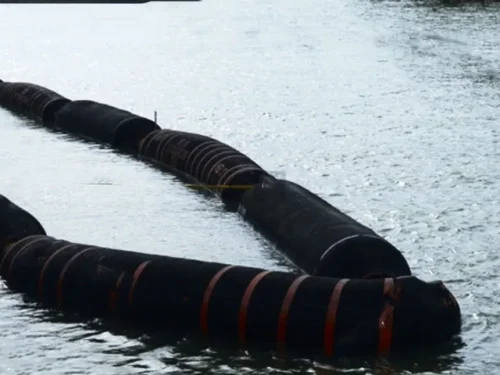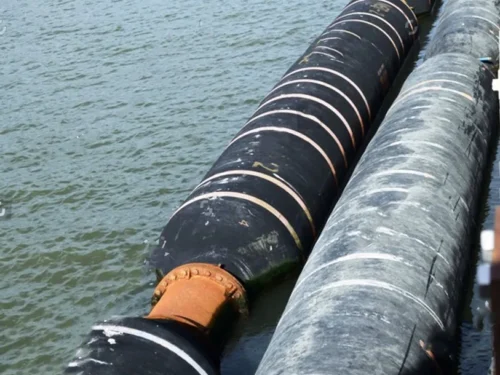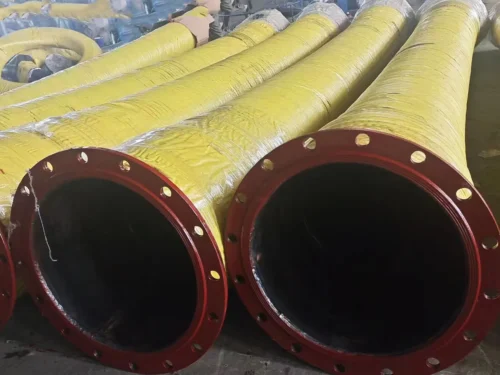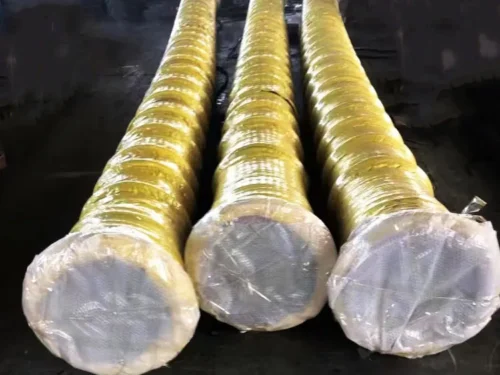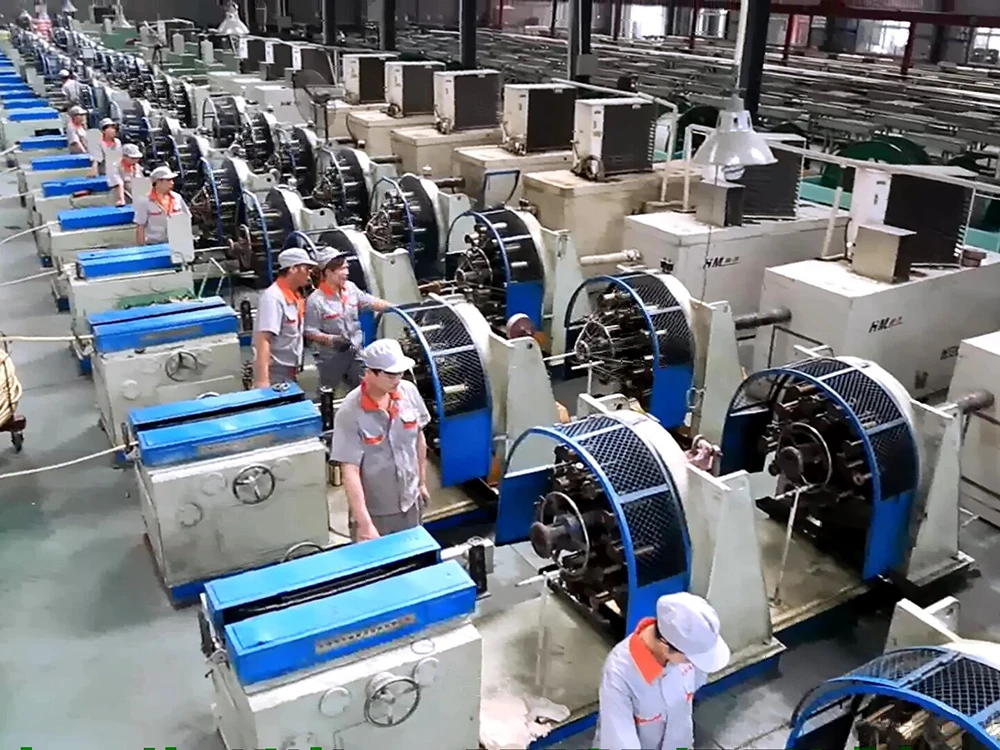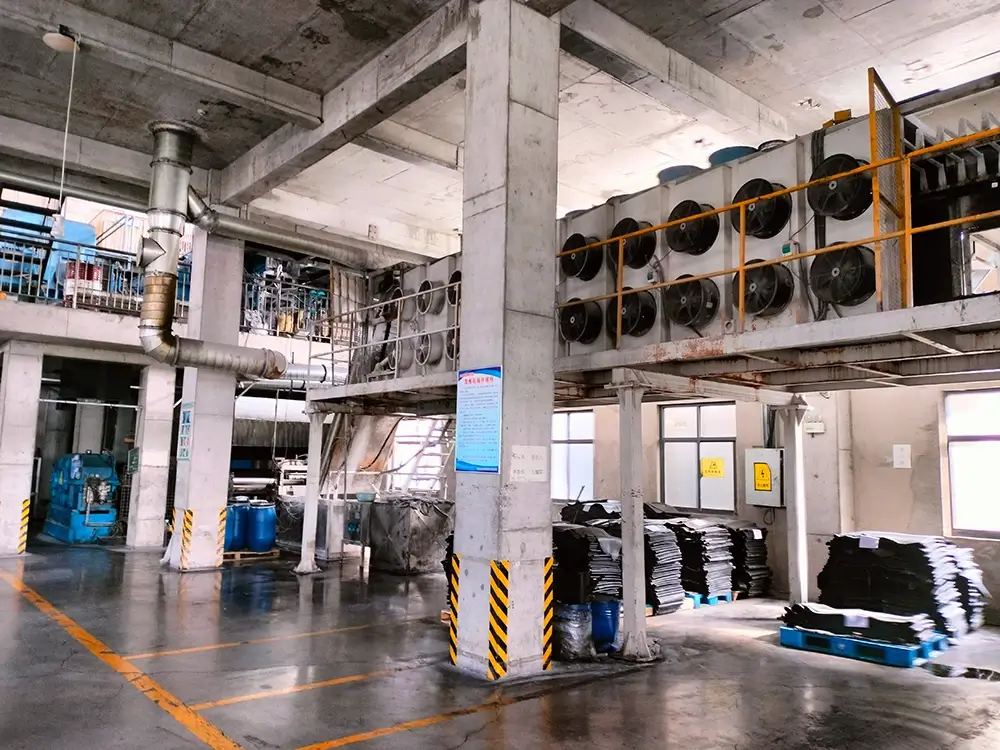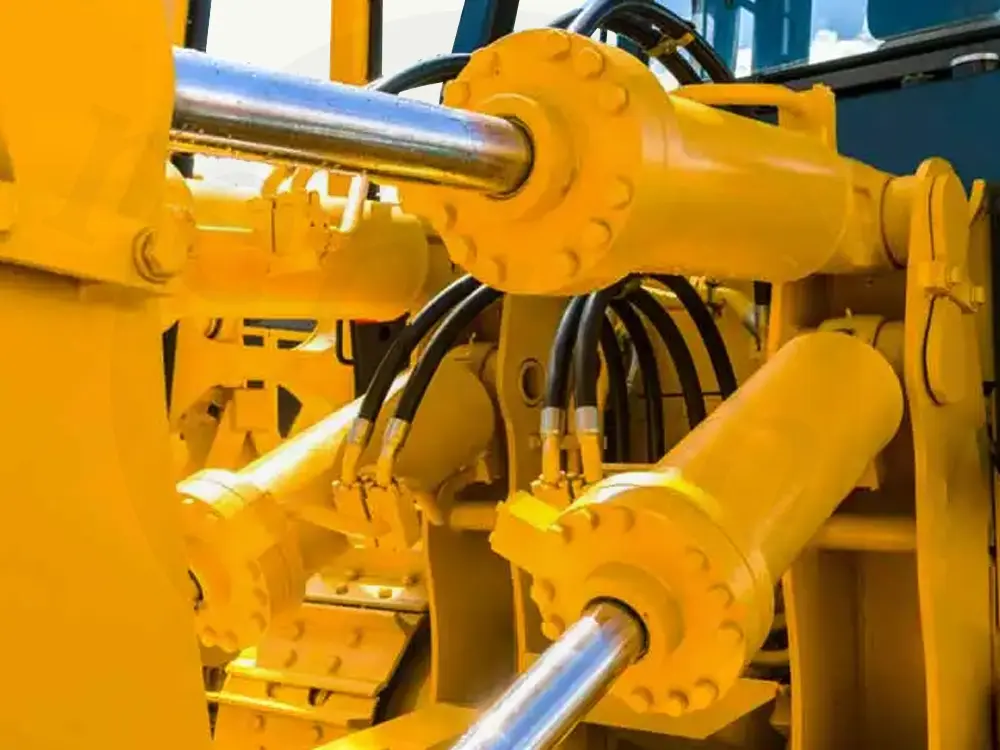Types of Dredge Hoses We Offer
As a leading dredge hose manufacturer, we offer all types and varieties. Moreover, our manufacturing team considers the custom requirement to make hoses tailored to your needs. Let's discuss the major types that we offer to our customers.
1- Discharge Dredge Hose
Our discharge dredger is very robust and durable. We use high-quality rubber lining inside the dredge hose. This lining helps show resistance to wear and tear, especially when abrasive material passes through the hose. Its exterior is also coated to prevent deterioration when the hose is exposed to sunlight or UV rays.
They come with high-quality steel rings reinforced with layers. These layers help the pipe bear high pressure with ease. This hose connects to the outlet of the dredger with a flange. Its role is to move the slurry of other material away from the dredger to the discharge point. During work, the pressure inside the hose increases, pushing the material outside.
2- Suction Dredge Hose
The suction dredger hose is different from the discharge hose in every aspect. They suck the slurry, gravel, sand, or other material towards the dredger. In simple terms, they connect to the inlet (intake) of the hose. The dredger creates a vacuum inside this suction hose. These hoses' interiors are very durable and can bear very low pressure.
As a result of suction, the material gets sucked inside the hose and goes into the dredger. Almost all the suction dredger hoses come with steel rings as reinforced layers. Once the material reaches the dredger, the dredger hose puts this material away at the destination (discharge point). We at Rent One Hose offer both types of dredge hoses.
3- Floating Dredge Hose
Both the suction and discharge dredge hoses sink into the water. Sometimes, dredging does not want the hoses to sink. Instead, it wants the hose to stay on the water's surface for efficient slurry transport. In such cases, floating dredge hoses come into the scene. Their interiors are similar to those of suction or discharge hoses.
However, we add floating material like foam or EVA to the exterior surface of these hoses. These additional layers of material are very buoyant and keep the hose swimming on the water's surface. No matter how much pressure is inside the hose, they don't sink. At Rentone Hose, we use high-quality stainless steel layers for reinforcement purposes.
Our pipes don't get rusty even when used in moist conditions for an extended period. Remember, consistent contact with water can make the steel rings rusty. Therefore, choosing the hose with high-quality stainless steel ring reinforcement is key. Moreover, we also offer painting services, which further improve corrosion resistance.
4- Ceramic Lined Dredge Hose
These hoes specialize in transporting highly abrasive materials. Their interior consists of small ceramic discs glued with an interior rubber lining. These small discs are robust and ensure no wear and tear when abrasive material passes through. General dredge hoses are less durable compared to these ceramic-lined hoses.
If the slurry or gravel consists of harsh material, it would cause wear and tear in the hoses. Therefore, heavy-duty dredging operations require these ceramic-lined hoses. Remember, they are not mandatory if you have standard material to be transported. I only recommend these to professionals working on large projects. Additionally, the price of these houses is high as compared to other types.


